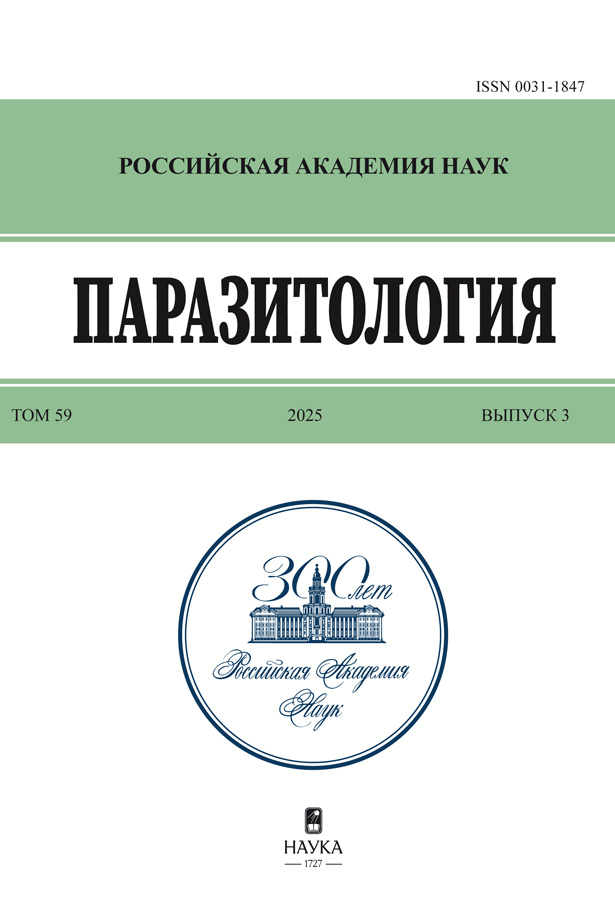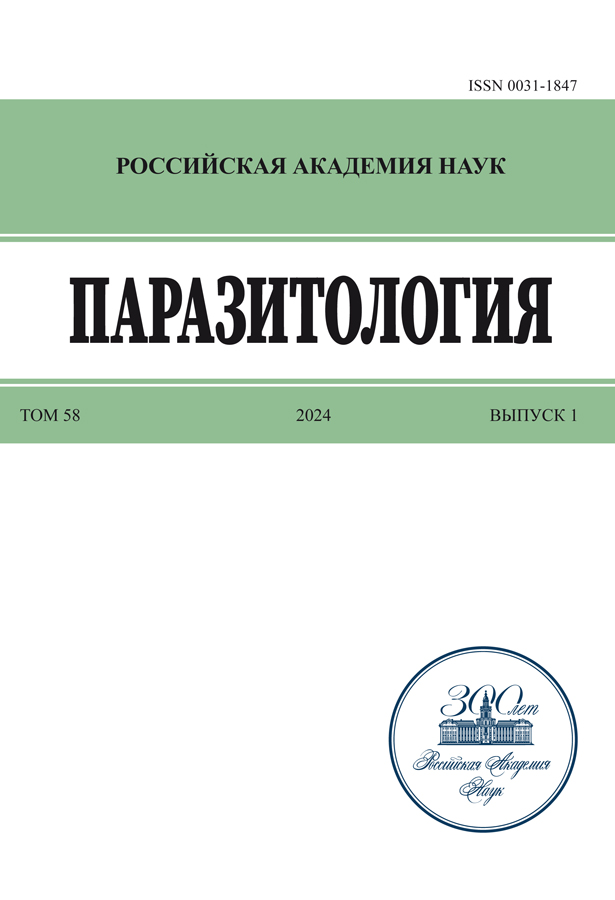Филогенетическое положение Polymorphus phippsi Kostylew, 1922 и Polymorphus magnus Skrjabin, 1913 (Palaeacanthocephala, Polymorphidae) по данным молекулярной филогении
- Авторы: Дюмина А.В.1, Галактионов К.В.1, Атрашкевич Г.И.2
-
Учреждения:
- Zoological Istitute of Russian Academy of Sciences
- Institute of the Biological Problems of the North Far East Branch of Russian Academy of Sciences
- Выпуск: Том 58, № 1 (2024)
- Страницы: 56-63
- Раздел: Статьи
- URL: https://rjeid.com/0031-1847/article/view/670182
- DOI: https://doi.org/10.31857/S0031184724010058
- EDN: https://elibrary.ru/SSJCAF
- ID: 670182
Цитировать
Полный текст
Аннотация
Сем. Polymorphidae входит в состав класса Palaeacanthocephala типа Acanthocephala (скребни) – облигатных паразитов позвоночных, использующих членистоногих в качестве промежуточных хозяев. Таксономия семейства на данный момент является предметом дискуссий. Согласно данным молекулярной филогении, типовой род семейства Polymorphidae – Polymorphus Lühe, 1911 – полифилетический. Мы получили последовательности генов 28S рДНК и CO1 митохондриальной ДНК и включили их в филогенетическую реконструкцию семейства Polymorphidae. Согласно полученным данным, P. magnus группируется в одну кладу с типовым видом рода – P. minutus Lühe, 1911, но при этом P. phippsi оказался в одной кладе с представителями рода Profilicollis Meyer, 1931. Филогенетическое положение P. phippsi согласуется с данными о полифилии рода Polymorphus и, соответственно, противоречит принятому в настоящее время таксономическому статусу данного вида.
Полный текст
Об авторах
А. В. Дюмина
Zoological Istitute of Russian Academy of Sciences
Автор, ответственный за переписку.
Email: aleksandra.diumina@zin.ru
Россия, Universitetskaya emb., 1, Saint-Petersburg, 199034
К. В. Галактионов
Zoological Istitute of Russian Academy of Sciences
Email: kirill.galaktionov@zin.ru
Россия, Universitetskaya emb., 1, Saint-Petersburg, 199034
Г. И. Атрашкевич
Institute of the Biological Problems of the North Far East Branch of Russian Academy of Sciences
Email: gatr@ibpn.ru
Россия, Portovaya str., 18, Magadan, 685000
Список литературы
- Ahlrichs W.H. 1997. Epidermal ultrastructure of Seison nebaliae and Seison annulatus, and a comparison of epidermal structures within the Gnathifera. Zoomorphology 117 (1): 41–48.
- Amin O.M. 2013. Classification of the Acanthocephala. Folia Parasitologica 60 (4): 273–305.
- De Lamballerie X., Zandotti C., Vignoli C., Bollet C., De Micco P. 1992. A one-step microbial DNA extraction method using “Chelex 100” suitable for gene amplification. Research in Microbiology 143 (8): 785–790.
- Folmer O., Black M., Hoeh W., Lutz R., Vrijenhoek R. 1994. Phylogenetic uncertainty. Molecular Marine Biology Biotechnology 3: 294–299.
- García-Varela M., Pérez-Ponce de León G., de la Torre P., Cummings M.P., Sarma S.S.S., Laclette J.P. 2000. Phylogenetic relationships of Acanthocephala based on analysis of 18S ribosomal RNA gene sequences. Journal of Molecular Evolution 50: 532–540.
- García-Varela M., Nadler S.A. 2005. Phylogenetic relationships of Palaeacanthocephala (Acanthocephala) inferred from SSU and LSU rDNA gene sequences. Journal of Parasitology 91(6): 1401–1409.
- García-Varela M., de León G.P.P., Aznar F.J., Nadler S.A. 2013. Phylogenetic relationship among genera of Polymorphidae (Acanthocephala), inferred from nuclear and mitochondrial gene sequences. Molecular Phylogenetics and Evolution 68(2) 176–184.
- Gouy M., Guindon S., Gascuel O. 2010. SeaView version 4: a multiplatform graphical user interface for sequence alignment and phylogenetic tree building. Molecular Biology and Evolution 27(2): 211–224.
- Khokhlova I.G. 1986. Acanthocephala of terrestrial vertebrates of the USSR. Moscow, Nauka, 275 pp. [In Russian].
- Miller M.A., Pfeiffer W., Schwartz T. 2010. Creating the CIPRES Science Gateway for inference of large phylogenetic trees // 2010 gateway computing environments workshop (GCE). Ieee 1–8.
- Monks S. 2001. Phylogeny of the Acanthocephala based on morphological characters // Systematic Parasitology 48(2): 81–115.
- Ronquist F., Eslenko M., Van der Mark P., Ayres D.L., Arling A.D., Höhn S., Larget B., Suchard M.A., Huelsenbeck J.P.H. 2012. MrBayes 3.2: efficient Bayesian phylogenetic inference and model choice across a large model space // Systematic biology 61 (3): 539–542.
- Sharpilo V.P., Salamatin R. 2005. Paratenic parasitism: origins and development of the concept. Ukraine, Kyiv, Logos, 237 pp. [In Russian].
- Smales L. 2015. Acanthocephala. In: Schmidt-Rhaesa A. (Ed.) Handbook of Zoology. V. 3. Gastrotricha, Cycloneuralia, Gnathifera. De Gruyter Publ., 317–336.
- Tamura K., Stecher G., Kumar S. 2021. MEGA11: molecular evolutionary genetics analysis version 11. 38(7): 3022–3027.
- Uspenskaya A.V. 1963. The parasite fauna of deep-water Crustacea in East Murmansk. Moscow-Leningrad, USSR Academy of Sciences, 128 pp.
Дополнительные файлы












